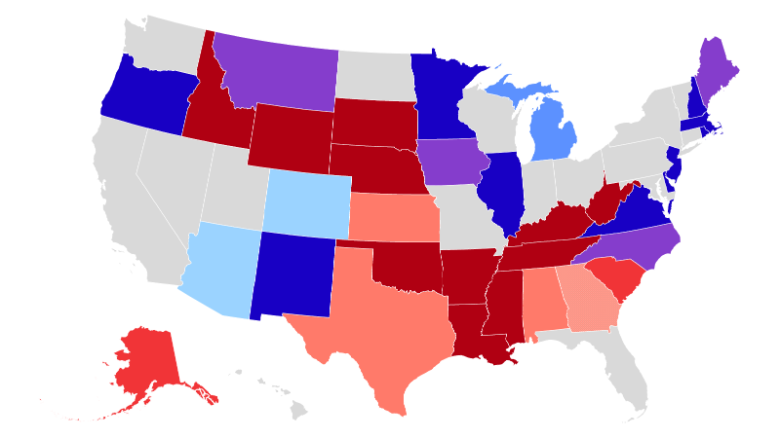The biggest news out of The Economist’s release this week of its Senate model is that it gives Democrats a 67% chance of winning 51 seats (and the the majority) on November 3.
But look a little deeper into the model’s projection and you see this: Democrats have a 1 in 3 chance of winning at least 53 seats and a 1 in 5 chance of winning at least 54 seats.
Which isn’t that much of a long shot!
Those projections about the possibility of November being a BIG win for Senate Democrats as opposed to recapturing the majority by a single seat (or two) have all sorts of potential implications for what 2021 might look like.
(Quick note: There’s no question, when looking at the landscape, that major Democratic gains — along the line of a 6- or 7-seat net pickup are possible. At the moment the Cook Political Report, a non-partisan campaign tip sheet, rates 10 GOP-held seats in its most endangered categories as opposed to just two Democratic seats.)
Consider that just this past Sunday, Senate Minority Leader Chuck Schumer (New York) promised that “everything is on the table” if Republicans, as they are expected to do, move forward before the election to confirm President Trump’s pick for the Supreme Court vacancy caused by Ruth Bader Ginsburg’s death last week.
In this case “everything” could mean: Adding seats to the Supreme Court, eliminating the filibuster entirely and granting statehood to DC and Puerto Rico. (Some of those moves would require a Democratic-controlled House and a Democrat in the White House.)
While it’s not clear just how far Schumer would be willing to take his threat if and when Democrats retake the majority and he is placed in charge of running the chamber, any student who has ever taken a poli-sci class can understand why a bigger majority makes these things more possible.
If Schumer, say, is overseeing a 51-seat Democratic majority in 2021, he can only afford to lose two votes of his colleagues on any major legislation.
And with West Virginia Sen. Joe Manchin and Arizona Sen. Kyrsten Sinema — both of whom have voted with Trump’s positions more than 50% of the time, according to 538, certain to be in the Senate at that time, it would complicate Schumer’s efforts to go BIG in terms of major reforms as a means of payback for what Senate GOPers are going to do with the Supreme Court.
Now consider how different Schumer’s outlook would be if he was sitting on a 53- or 54-seat majority. He could afford to let Manchin and Sinema go their own ways on this issue or that — and still be left with wiggle room to get things passed by simple majority.
The Point: The last few days have taught us all just how big the difference is — in terms of outcomes — between controlling 53 Senate seats and 51 Senate seats.
>>>>
